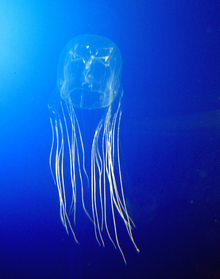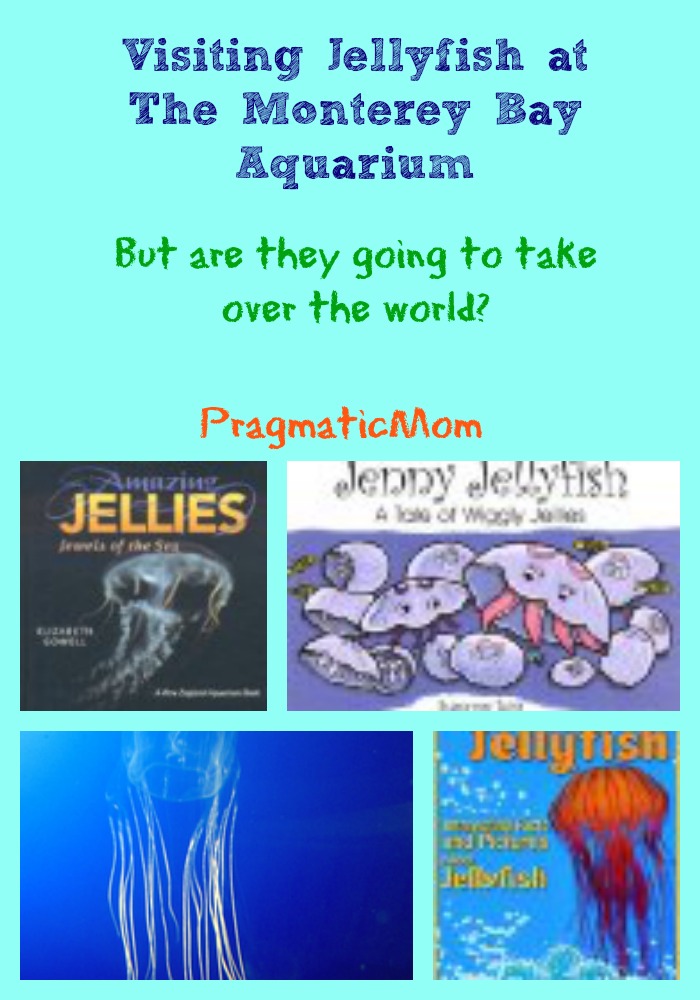Will we all be eating jellyfish in the future because jellies have taken over the oceans? It’s entirely possible according to marine biologists.
In waters from the Sea of Japan (aka East Sea) to the Black Sea, jellies today are thriving as many of their marine vertebrate and invertebrate competitors are eliminated by overfishing, dead zonesand other human impacts. How have these drifters of the sea reversed millions of years of fish dominance, seemingly overnight? Huffington Post
Will Jellyfish Take Over The World?
At the Monterey Bay Aquarium, their scientists note that this has already happened. Most jelly populations are stable, but overfishing has changed the balance in the ocean, causing jelly populations to skyrocket. This has already happened on isolated occasions in several parts of the world, notably off Namibia, Africa.
When fishing boats remove too many fish, their absence leaves more uneaten plankton to feed jellies. Those well-fed jellies produce even more jellies, which eat small fish and tiny fish larvae in addition to plankton. If jellies become too numerous, fish populations may not have a chance to bounce back, even if overfishing stops. Monterey Bay Aquarium site
What keeps jellies in check? Who are jellyfish predators? Blue rockfish, molas, dogfish, anchovies, chum salmon and mackerel all eat jellies. Sea turtles, an endangered animal, also love to eat jellyfish.
Jellyfish for Dinner?
So, will you be eating jellyfish? You’d be in good company!
A few kinds of jellies are popular as food in Asia. Worldwide, an estimated 321,000 metric tons of jellies are caught for food every year. Japan alone imports up to 10,000 tons of jellyfish annually, where they can sell for $10-$12 per pound. Preparing jellies is a competitive business complete with trade secrets practiced by respected “jellyfish masters.” Monterey Bay Aquarium site
Jellies Exhibit at the Monterey Bay Aquarium
I find the jellyfish exhibits to be entralling. They are gorgeous! But they can also be dangerous; many species have very powerful stings. According to the Monterey Bay Aquarium, the most dangerous jellyfish is the box jelly:
The Most Dangerous Jelly
The sea wasp, or box jelly, is widely regarded as one of the most dangerous jelly fishes in the world and lives in the waters off Australia. Its potent toxins can cause great pain, scar or even kill people unlucky enough to swim into the tentacles. But as long as you’re not getting stung, a box jelly is a remarkable creature. The body is square rather than umbrella shaped, and each corner of the “box” has eyes. Slightly less dangerous species live in other tropical waters, including near Hawaii, where they often gather in shallow waters 8-10 days after a full moon.

Books for Kids About Jellyfish
Jellyfish! Childrens Books About The Ocean: An Educational Book About Jellyfish for Children Full of Beautiful Pictures and Facts! by Julie Pearson
Jenny Jellyfish: A Tale of Wiggly Jellies (No. 23 in Suzanne Tate’s Nature Series) by Suzanne Tate
Amazing Jellies: Jewels of the Sea by Elizabeth Gowell
To examine any book more closely at Amazon, please click on image of book.
As an Amazon Associate, I earn from qualifying purchases.
This looks like a jellyfish, but the Portuguese man-of-war is actually a siphonophore, which means that it’s composed of a colony of individual animals called zooids.
BEST #OWNVOICES CHILDREN’S BOOKS: My Favorite Diversity Books for Kids Ages 1-12 is a book that I created to highlight books written by authors who share the same marginalized identity as the characters in their books.














I LOVE the Monterey Bay Aquarium and I remember the excitement when it was first opening. I grew up in that area. The NY Aquarium had a great jellyfish exhibit until Hurricane Sandy wiped it out.
Hi Erica,
My husband grew up in Monterey and attended Monterey High School. We have a good friend who grew up in Pacific Grove as well but you probably don’t know them as we are in our late 40s. Everytime we visit Monterey, we make a trip to the aquarium. It is amazing. That whole area is a natural wonder. My husband knows all this oceanography trivia even though he studied political science because it just seemed to seep in if you grew up there.
I hope you get your jellyfish exhibit back soon!
Fascinating creatures! Tried to set up a visit to the NY Aquarium last month, but unfortunately the majority of their exhibits are still closed due to the damage from Sandy.
Hi Barbara,
Erica was just saying the same thing. I’m so sorry. I hope the NY Aquarium gets up and running again soon.
I would get scared if it was the peanut butter and jellyfish variety (I know pretty corny)
Hi Faigie,
Hee hee! Maybe my kids would eat that!
We also love Monterey Bay jellyfish exhibits, but dealing with jellyfish “in the wild” is another matter entirely. I dislike them since early childhood 🙂 I hope they will not take over any time soon!
Hi Natalie,
I know what you mean. How can something so beautiful in the water be also so painful (and even deadly) if touched. We stay away from jellyfish on the beach and ocean too though they are so tempting to touch.
I don’t believe I’ll be eating any, thank you, but I do think they’re gorgeous. I think it’s funny that anchovies eat jellies.
Hi Jeanette,
I wonder if anchovies eat very small jellies. If you have ever been to a big Chinese wedding banquet or Chinese New Year’s banquet, there’s a good chance you might have had jellyfish. It’s a popular cold appetizer. You might like it if you try it …
I just saw one like your first video washed up on the beach.
I remember getting stung as a kid. There are lots of jelly fish were we swim. It was painful!
Thanks for the videos, mesmerizing, and the book list. I will look for these.
I wonder how you eat them. Cooked? Are they like shellfish. We eat calamari!
Hi Ann,
Oooh, so sorry you were stung by jellyfish. Ouch! The Chinese apparently have secret techinques for making jellyfish delicious. I have eaten them as a cold appetizer; they are a unique texture as they are crunchy but slippery. There’s not much flavor but the Chinese will use soy sauce, sugar and ginger to flavor it (I think that is what they use at least).
Yes, I believe they are cooked; perhaps simmered? I’m not sure how long but they are extremely crunchy.
Don’t you have to be specially trained because they are poisonous if they aren’t prepared just right? I’m not sure I want to try them!
I do think they are pretty, but hope they don’t take over the world. We need diversity!
Hi MaryAnne,
I think you are thinking of the Pufferfish which is considered a delicacy in Japan. There are specially trained “Fugu” chefs for this because, yes, it could kill you! I’m not sure I’d try Pufferfish either.
But you are right; some jellyfish are poisonous enough to kill while others just have a very painful sting. I think there are only certain jellyfish species that are good for eating but I’ll have to research that and get back to you.
Jellyfish is very popular in Chinese cuisines (those big banquets for weddings) so I’ve had it a lot and never thought about the poisonous aspect but apparently the chefs closely guard their secrets on how to make jellyfish taste delicious. I think that is a challenge!
You are right, I was thinking of the pufferfish!
I’m not sure I want to eat something that is SO hard to make taste delicious!
Hi MaryAnne,
I agree with you but I’m thinking that if we ruin our oceans in the not too distant future and the jellyfish take over, it would be nice to know how to make them taste good.